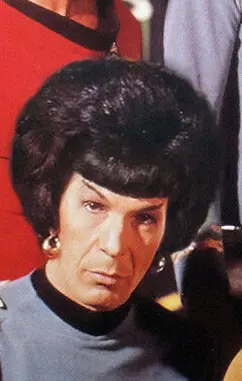I know this has been an infuriating topic for a while now, but gosh it’s getting on my nerves. I’m trying to watch Secret Level, finally, and I can’t see half of what’s happening because so many scenes across many of the shorts are pretty much pitch black.
Why?? Why not, y’know, just give us a little bit of fucking contrast? Instead, I have to choose whether to have a light on or to not see the scenes.
What video player doesn’t have a gamma slider?
I can tolerate that, the one I can’t stand is Netflix shows where the ~dialogue is a mumbled quiet~ and random bits of foley try to blow my speakers out.
It makes it especially noticeable just how dodgy a lot of foley/sound editing work is, eg when someone throwing a punch and missing still goes WHOOSH at the same volume they use for gunshots. There’s YA shows now where even the camera panning gets a sound effect ffs
This cause could be downmixing from something like 5.1 or 7.1 to stereo. Because dialogue is mostly on the center channel while music and SFX are much more spread out in the soundstage, you might have a sound appear on speakers center, front left and back left while dialogue only happens on center.
This would mean that depending on the mix, you might have a sound that’s 2-3 times louder than the dialogue when mixed to stereo since all those sounds have to get played on fewer speakers.
This is why a 5.1 compatible soundbar will be more balanced than stereo speakers, even if it doesn’t have full surround sound. They have a physical speaker for each of the channels so at least the mix sounds better.
Not saying this is always the issue but its certainly one of the possible causes.
They’re taking advantage of the ability to do so with modern cameras and TVs because a dark look communicates something - a dark mood for example. It contrasts with other shows or scenes.
It stands out to me when a scene is supposed to be at night but obviously has a 100ft light tower just off camera. Toning it down looks good.
That’s your motivation to buy a new TV with the most expensive OLED out there, high contrast and a smarthome with nice automatic blinds for the windows.
But seriously, I thought that was mainly over by now? I had a lot of those shows 5-10 years ago. But seems they still do it.
They are giving you contrast, lots more contrast.
That’s actually the problem, most people don’t have very good displays and additionally watch dark content in lit rooms - but showrunners are pushing for HDR, when you’ve got a $20k Sony OLED PVM in bt2020 or ‘color space off’ (native gamma), everything looks good. (There is a BT709/sRGB emulation mode, but I don’t think they care enough to use it)
Try to watch the same on an IPS LCD with possibly not even 100% SRGB coverage and you’re going to have a bad time. Even a VA will have a bad time if viewed off-axis.
In audio, you would test with multiple reference monitors and rooms. Cellphone, car, shitty tv speakers, mono, etc. The idea being you record/edit/mix it on normal monitors, but then check it out in ways that normal people will, to see if it translates well or will sound like shit.
I get where you’re coming from but movie audio also fails here. The same darkness discussion arises about dialogue-to-explosion volume regularly :)
That doesn’t take away from what you said they “proper” audio work is done that way …
Picard season 3 is very much a standout for this trend.


Wow, that is egregiously bad. Almost impossible to tell what’s going on in the first shot. Like, even in a dark shot you still need to be able to see their silhouettes or something. This just looks like a bunch of blobs.
I think he’s playing a very small piano.
That series should be erased from history
Just watch Star Trek Enterprise instead… :)
Light is expensive in the 24th century.
Not so much in the 23rd century Kelvin-verse:

The lights were too high for 100 years so they’re compensating. Dilithium crystals got expensive when the Ferengi cornered the market.
Maybe they are actually in the dark dimension!
It actually took me several seconds to notice the man in the first picture
Lol I didn’t notice till I read your comment.
That is odd. It looks fine for me. Are you running a really old display?
I didn’t have any problem with the guy in the first picture either, but I would be willing to bet that many of us are viewing this thread using very different display brightness/contrast settings.
I’m currently looking at it on a laptop. My laptop has no light sensor with automatic brightness adjustment, and I use the laptop in a wide range of environments, so I need to use
brightnessctlon Linux to fiddle the brightness, usually between about 10% and 60%. It’s not like there’s one single “correct brightness” when I’m in a ton of different environments.My desktop’s monitor doesn’t have a light sensor with automatic brightness adjustment either.
There’s probably some way to go get a brightness sensor and a daemon to auto-fiddle the thing on the desktop — webcams, which often have automatic brightness adjustment themselves, aren’t great for this. But, well, I never got around to it.
Wow, is the Enterprise lose their engineer so no bulb is being replaced?
It’s the Titan-A, but seems like everyone is photosensitive for some reason.
Same feel.
I’ve noticed this problem with a lot of media made in the past decade. I think Netflix’s ‘Ozark’ is one of the worst examples. In almost every indoor scene the lights are off or very dim.
However, I got an oled screen this year, and it’s helped a lot with dim scenes. I’m guessing hollywood is calibrating for expensive high contrast screens like oled and mini-led?
I think this is the real answer. HDR is a thing and the baseline for expected dynamic range is higher than both what older displays can produce and older eyes can consume.
HDR
Your dying homie the light has dimmed in your eyes, ravaged by time.
Because your tv black level or gamma are set wrong?
It’s not the TV settings of the poster that inspired these articles:
https://www.polygon.com/23661749/why-movies-look-dark-cinematography/
https://variety.com/2022/film/news/why-movies-so-dark-hard-to-see-batman-1235195535/
https://www.redsharknews.com/is-modern-cinematography-too-dark
While some movies were not graded perfectly for some home screens, shooting darker movies has definitely been a trend, sometimes up to a point where it is indeed impossible to actually see what’s happening, and a lot of people complain about that.
Home theater enthusiast here, had my brand new screen calibrated professionally. Still can’t see shit.
TV shows are definitely not being lit well and graded poorly. It’s the visual pairing with all the actors mumbling for “realism”. The most famous example is the final battle in Game of Thrones but it’s not stopped there.
Screw the calibration and crank that gamma
Dark shows on decent/properly calibrated screens are my crack tho. Why must you deprive me.
You do you, boo. I just want to see what I’m watching ;-;
You know what, fair enough. My reply was more tongue in cheek. I don’t doubt it would be frustrating.
Did you take your sunglasses off?
Of course not! It’s nighttime!
Thanks that was it
What kind of nerd do you take me for?
This is definitely a thing. See comment with screeshots from Picard. But I don’t let it infuriate me - just adjust the screen or crank up the gamma or, if you want the cinematic experience, switch off surrounding lights.
Your display likely has some sort of brightness/contrast setting.
If you’re playing this movie on a computing device, the video player software likely also has adjustment settings at the software level. I use
mpvon Linux to watch most video, and there, by default, 1 and 2 are contrast, 3 and 4 brightness, and 5 and 6 gamma.yeah, MPV is the goat
I have to choose whether to have a light on or to not see the scenes.
have you ever adjusted your TV? sounds to me like it might just need some calibrating.
I guess I’ve gotta figure this out. It’s pretty new and I thought it was supposed to just be able to help with the darkness. But I dunno












